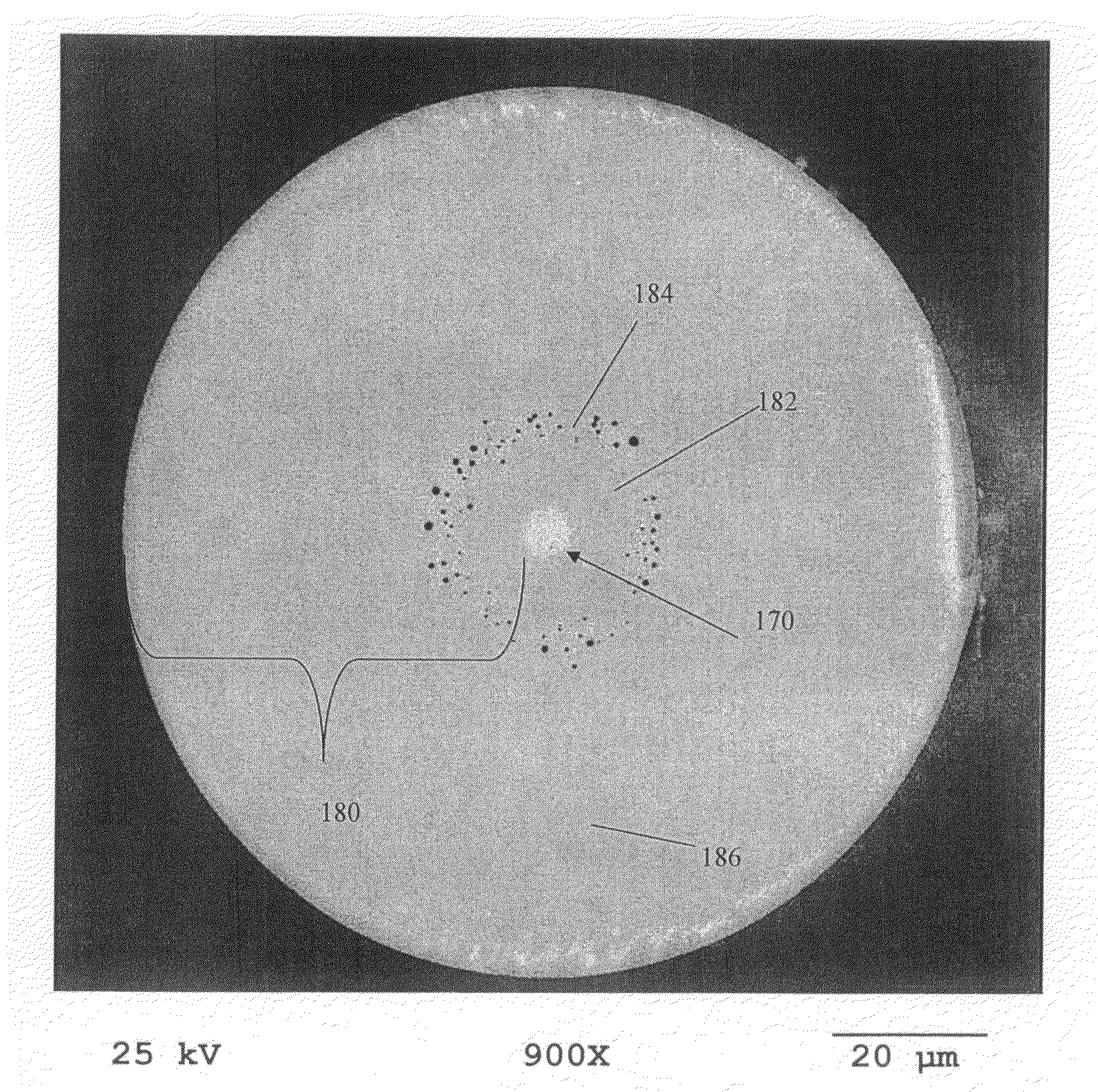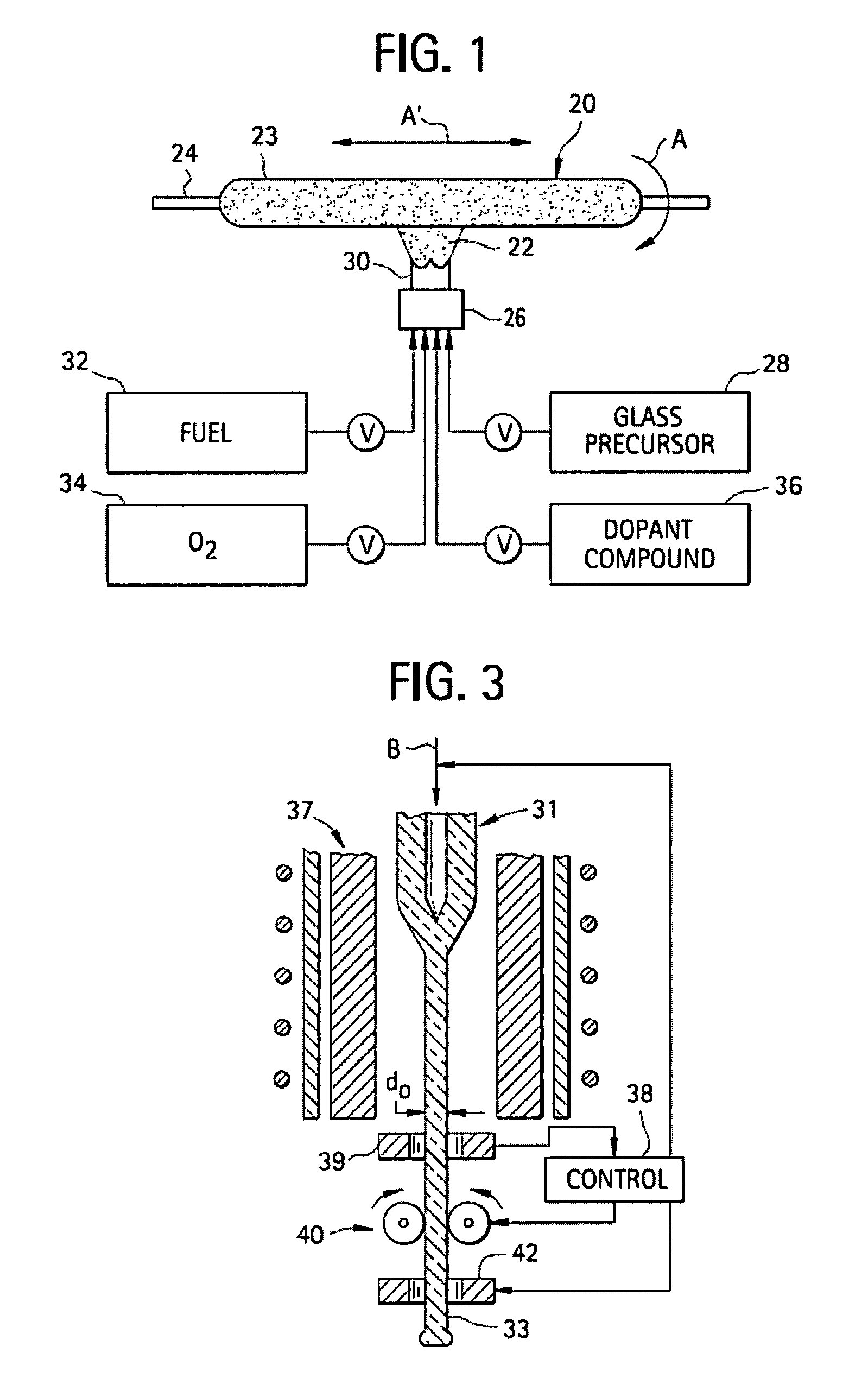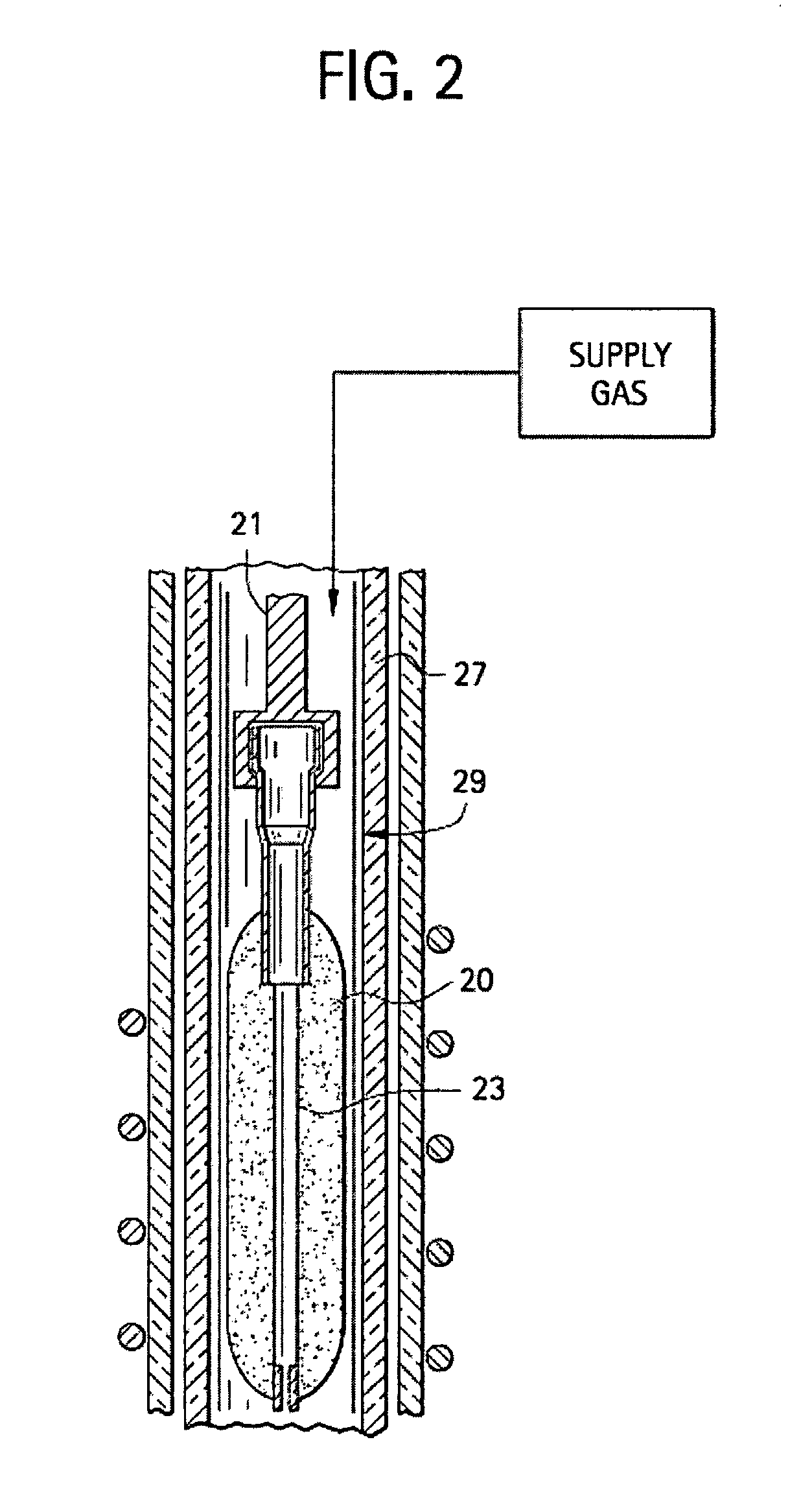Microstructured transmission optical fiber
a transmission optical fiber and microstructure technology, applied in the field of optical fibers, to achieve the effect of improving bend resistan
- Summary
- Abstract
- Description
- Claims
- Application Information
AI Technical Summary
Benefits of technology
Problems solved by technology
Method used
Image
Examples
example 1
[0067]4600 grams of SiO2 (0.42 g / cc density) soot were deposited via OVD onto a fully consolidated 1 meter long×10 mm diameter step index (0.35 percent delta, 0.33 core / clad diameter ratio) GeO2-SiO2 core-SiO2 clad core cane, thereby resulting in a preform comprising a consolidated core region which was surrounded by a consolidated silica cladding region which in turn was surrounded by a soot silica region. The soot cladding of this assembly was then sintered as follows. The assembly was first dried for 2 hours in an atmosphere consisting of helium and 3 percent chlorine at 1000° C. followed by down driving at 6 mm / min through a hot zone set at 1500° C. (corresponding to a 3° C. / min temperature increase for the outside of the soot preform during the downdrive process) in a 100% oxygen (by volume) atmosphere in order to sinter the soot to an oxygen-seeded overclad blank. The blank was placed for 24 hours in an argon purged holding oven set at 1000° C. to outgas the helium from the bl...
example 2
[0069]200 grams of SiO2 (0.42 g / cc density) soot were deposited via OVD onto a fully consolidated 1 meter long×10.6 mm diameter step index (0.35 percent delta, 0.33 core / clad diameter ratio) GeO2-SiO2 core-SiO2 clad core cane (similar to Example 1), thereby resulting in a preform comprising a consolidated core region which was surrounded by a consolidated silica cladding region which in turn was surrounded by a soot silica region. The soot cladding of this assembly was then sintered as follows. The assembly was first dried for 2 hours in an atmosphere consisting of helium and 3 percent chlorine at 1000° C. followed by down driving at 200 mm / min (corresponding to approximately a 100° C. / min temperature increase for the outside of the soot preform during the downdrive process) through a hot zone set at 1490° C. in a 100 percent oxygen sintering atmosphere. The preform assembly was than re-down driven (i.e., a second time) through the hot zone at 100 mm / min (corresponding to approximat...
example 3
[0070]290 grams of SiO2 (0.47 g / cc density) soot were deposited via OVD onto a fully consolidated 1 meter long ×10.4 mm diameter step index (0.35 percent delta, 0.33 core / clad diameter ratio) GeO2SiO2 core-SiO2 clad core cane (similar to Example 1), thereby resulting in a preform comprising a consolidated core region which was surrounded by a consolidated silica cladding region which in turn was surrounded by a soot silica region. The soot cladding of this assembly was then sintered as follows. The assembly was first dried for 2 hours in an atmosphere consisting of helium and 3 percent chlorine at 1000° C. followed by down driving at 200 mm / min (corresponding to approximately a 100° C. / min temperature increase for the outside of the soot preform during the downdrive process) through a hot zone set at 1490° C. in a 100 percent oxygen sintering atmosphere. The preform assembly was than re-down driven (i.e., a second time) through the hot zone at 100 mm / min (corresponding to approximat...
PUM
| Property | Measurement | Unit |
|---|---|---|
| diameter | aaaaa | aaaaa |
| mean diameter | aaaaa | aaaaa |
| radial width | aaaaa | aaaaa |
Abstract
Description
Claims
Application Information
 Login to View More
Login to View More - R&D
- Intellectual Property
- Life Sciences
- Materials
- Tech Scout
- Unparalleled Data Quality
- Higher Quality Content
- 60% Fewer Hallucinations
Browse by: Latest US Patents, China's latest patents, Technical Efficacy Thesaurus, Application Domain, Technology Topic, Popular Technical Reports.
© 2025 PatSnap. All rights reserved.Legal|Privacy policy|Modern Slavery Act Transparency Statement|Sitemap|About US| Contact US: help@patsnap.com



